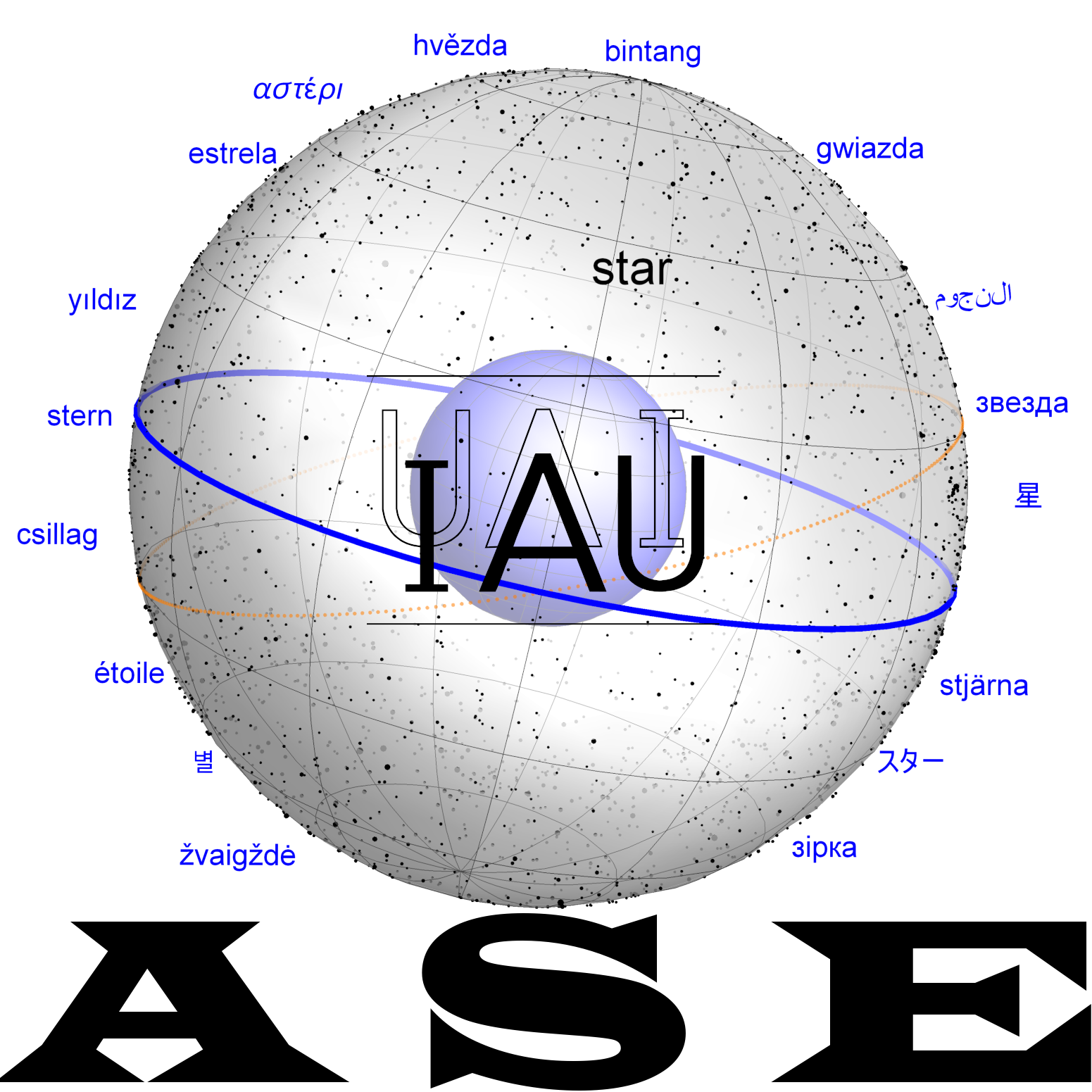Elamātum: Difference between revisions
No edit summary |
DavidHilder (talk | contribs) No edit summary |
||
| (10 intermediate revisions by 3 users not shown) | |||
| Line 1: | Line 1: | ||
{{DISPLAYTITLE:''Elamātum''}} |
{{DISPLAYTITLE:''Elamātum''}} |
||
<sup>(mul)</sup>''Elamāt(t)u(m)'' occurs |
<sup>(mul)</sup>''Elamāt(t)u(m)'' (𒀯𒉏𒈠𒌈) occurs as an appellation of the goddess Ištar as the planet Venus, ''<nowiki/>'Ištar'' ''Elamātum,'' generally understood as 'Ištar, the Elamite-one.' The earlier interpetation as a designation of an asterism is rejected. |
||
{{Template:Venus}} |
|||
==Dictionary== |
|||
==Concordance, Etymology, History== |
|||
===Krebernik (2023)=== |
===Krebernik (2023)=== |
||
| Line 10: | Line 12: | ||
The Old Babylonian mythological text “Girra and Elamattum” tells us that a creature named ''Elam''(NIM)-''ma-tum'' was slain by the fire god Girra and placed in the midst of heaven. In the Old Babylonian “Prayer to the Gods of the Night”, ''E-la-ma-tum'' is mentioned after the “Bow(-star)” (AO 6769: 17). <sup>d</sup>''Iš-tar'' NIM.MA-tu<sub>4</sub> (AN 12r). |
The Old Babylonian mythological text “Girra and Elamattum” tells us that a creature named ''Elam''(NIM)-''ma-tum'' was slain by the fire god Girra and placed in the midst of heaven. In the Old Babylonian “Prayer to the Gods of the Night”, ''E-la-ma-tum'' is mentioned after the “Bow(-star)” (AO 6769: 17). <sup>d</sup>''Iš-tar'' NIM.MA-tu<sub>4</sub> (AN 12r). |
||
===Kurtik with Hilder, Hoffmann, Horowitz, Kim=== |
===Kurtik with Hilder, Hoffmann, Horowitz, Kim=== |
||
The asterism Elamatum appears in the Old Babylonian prayer to the Gods of the Night AO 6769 ''e-la-ma-tum'' is listed as one of 10 names of astral gods and asterisms addressed by the speaker [Dossin 1935<ref>''Dossin G''. Prières aux “Dieus de la nuit” (AO 6769) // RA. 1935. V. 32, № 4. P. 179-190.</ref>, 181:17; Kurtik 2007<ref>Kurtik, G. (2007): Звездное небо Древней Месопотамии. Шумеро-аккадские названия созвездий и других светил [The Star Heaven of Ancient Mesopotamia: Sumero-Akkadian Names of Constellations and Other Heavenly Bodies], Aletejja, St. Petersburg, Russia.</ref>, 827]. An Old Babylonian myth tells of the creation of the constellation Elamatum by the supreme deity Enlil: |
|||
paragraph 1: In the Old Babylonian prayer to the Gods of the Night AO 6769 e-la-ma-tum is listed as one of 10 |
|||
* ''u<sub>3</sub> elam-ma-tum ša ˹te˺-ne-ru-ši-i-ma / ˹li-ṣi˺-a-˹am-ma˺ i-na ˹qa-ab-li˺-tu ša-ma-i /'' [xxx] ''x li-iz-zi-iz-ma'' |
|||
BELOW 'Hirra and Elamatum' needs to be corrected to Girra and 'Elamatum' <nowiki>[[ after . . . 38]]</nowiki>. This is the clearest evidence that Elamatum' can be an asterism in its own right, independent of any relationship with Venus or the 'Bow-star'. In the Old Babylonian Prayer to the Gods of the Night A0 6769 Elamatum is listed as one of the 10 asterisms between 'The Bow-star' (''qaštum'') and the Pleiades (''zappum''). Here taking ''qaštum elamātum'' as a single asterism would reduce the number of asterisms in the prayer to 9, which is unacceptable given the fact that parallel ERM 15642 lists 10 asterisms including ''qaštum'' on its own |
|||
* "And let Elamatum whom you killed, / rise and in the middle of heaven / [. ...] let her stand." [Walker 1983<ref>''Walker Ch.'' The Myth of Girra and Elamatum // Anatolian Studies, 1983, V. 33, p. 145-152.</ref>, BM 78962:36-38]. |
|||
{| class="wikitable" |
|||
|- |
|||
!Sources!!Identifications |
|||
|- |
|||
|'''"Prayers to the Gods of the Night."''' |
|||
The Old Babylonian prayer AO 6769 contains e-la-ma-tum in the list of names of astral gods [Dossin 1935, 181:17; Kurtik 2017, 827]. Earlier this word was interpreted as a definition in the expression qaštum elamātum "Elamian Bow". [AHw, 196; CAD Q, 152; Weidner 1957-59, 73] and was identified with the constellation <sup>mul</sup>BAN, considered an astral incarnation of Ishtar of Elam, see b06[[BAN]] as well as [Cooley 2013, 124-129]. "Hirra and Elamatum. An Old Babylonian myth tells of the creation of the constellation Elamatum by the supreme deity Enlil: u<sub>3</sub> elam-ma-tum ša ˹te˺-ne-ru-ši-i-ma / ˹li-ṣi˺-a-˹am-ma˺ i-na ˹qa-ab-li˺-tu ša-ma-i / [xxx] x li-iz-zi-iz-ma "And let Elamatum whom you killed, / rise and in the middle of heaven / [. ...] let her stand." [Walker 1983, BM 78962:36-38]. |
|||
Earlier, this word was interpreted as a definition in the expression ''qaštum elamātum'' "Elamite Bow". [AHw<ref>''Soden von W''. Akkadisches Handwörterbuch. Wiesbaden, 1985.</ref>, 196; CAD<ref>''The Assyrian Dictionary of the Oriental Institute of the University of Chicago.'' Chicago - Glückstadt, 1956 -...</ref> Q, 152; Weidner 1957-59<ref>''Weidner E.'' mul gir<sub>2</sub>.tab = ''zuqaqîpi'' // AfO. 1957-1958. Bd. 18. S. 393-394].</ref>, 73] and was identified with the constellation [[PAN|<sup>mul</sup>PAN]], considered an astral incarnation of Ishtar of Elam, see (Kurtik b06) [[BAN|PAN]] as well as [Cooley 2013<ref>Cooley, J. (2013). Poetic Astronomy in the Ancient Near East: The Reflexes of Celestial Science in Ancient Mesopotamian, Ugaritic, and Israelite Narrative.</ref>, 124-129]. Here taking ''qaštum elamātum'' as a single asterism would reduce the number of asterisms in the prayer to 9, which is unacceptable given the fact that parallel ERM 15642 lists 10 asterisms, including ''qaštum'' on its own (Horowitz 2014<ref>Horowitz, W. (2014), The three stars each: the Astrolabes and related texts, Archiv für Orientforschung AfO Beiheft, 33.</ref>: 118-119). Further, ''Elamātum'' is not the form of the fem. adjective, which would be ''elamītum'' for 'Elamite Bow.' Therefore, the earler interpretation of ''qaštum'' in the Prayer to the Gods of the Night can be rejected. |
|||
Although the myth "Girra and Elamātum" indicates as if the name "Elamātum" is connected with a luminary not coinciding with the Bow constellation, but the earlier interpretation of elamātum as the definition under qaštum in the Prayer to the Gods of the Night cannot, in our opinion, be definitely rejected. |
|||
|Example |
|||
This does not preclude later confusion with the manifestation of Ištar (Venus) as the Elamite Bow (Kurtik q01, ''[[Qaštu]]''). |
|||
|} |
|||
There is only one hint of a deity (perhaps the Elamite Ištar) next to the constellation PAN, the Bow, which is mentioned in the GU-text as the "left leg" at the Arrow. If this is the leg of a deity next to the double-constellation of Bow and Arrow, a deity that holds bow and arrow, it may - perhaps - be the Elamite Ištar who can be interpreted as the Egyptian Satis (also with bow and arrow), as depicted on the circular Dendera zodiac.<ref>Hoffmann, S.M. (2022). Astronomical Information in the GU-Text, in Hoffmann and Wolfschmidt (eds.). Astronomy in Culture – Cultures of Astronomy, tredition Hamburg/ OpenScienceTechnology Berlin: 193-204</ref> |
|||
==Historical Dictionaries== |
==Historical Dictionaries== |
||
{| class="wikitable" |
{| class="wikitable" |
||
|- |
|- |
||
!Kurtik (2022)!!Gössmann (1950) |
!Kurtik (2022)!!Gössmann (1950) |
||
|- |
|- |
||
|= «Женщина Элама»(?); отождествление не установлено. |
|= «Женщина Элама»(?); отождествление не установлено. |
||
| Line 46: | Line 44: | ||
[[Category:Eurasia]] |
[[Category:Eurasia]] |
||
[[Category:Cuneiform]] |
[[Category:Cuneiform]] |
||
[[Category:Solar System]] |
|||
[[Category:Planet]] |
|||
[[Category:Venus]] |
|||
[[Category:Asterism]] |
|||
Latest revision as of 07:32, 6 October 2025
(mul)Elamāt(t)u(m) (𒀯𒉏𒈠𒌈) occurs as an appellation of the goddess Ištar as the planet Venus, 'Ištar Elamātum, generally understood as 'Ištar, the Elamite-one.' The earlier interpetation as a designation of an asterism is rejected.
Images of Venus (Naked Eye Appearance)
Concordance, Etymology, History
Krebernik (2023)
(in combination with Ištar). Name of an asterism and of a goddess. The reading is confirmed by syllabic spellings (e.g., E-la-ma-tum, Astrolabe B 15). The name is usually rendered as “Elamite (Ištar)”. Note, however, that the Akk. word for “Elamite” is Elam(m)ītu whereas Elam(a)tum is “Elam”. Furthermore, the filiation “daughter of Enlil” contradicts Babylonian mythology where Inanna/Ištar is either the daughter of An/Anum or the daughter of the moon god Nanna/Sîn (who is a son of Enlil and Ninlil). It seems possible that the name is of a different origin, and its association with Elam based on folk etymology.
The Old Babylonian mythological text “Girra and Elamattum” tells us that a creature named Elam(NIM)-ma-tum was slain by the fire god Girra and placed in the midst of heaven. In the Old Babylonian “Prayer to the Gods of the Night”, E-la-ma-tum is mentioned after the “Bow(-star)” (AO 6769: 17). dIš-tar NIM.MA-tu4 (AN 12r).
Kurtik with Hilder, Hoffmann, Horowitz, Kim
The asterism Elamatum appears in the Old Babylonian prayer to the Gods of the Night AO 6769 e-la-ma-tum is listed as one of 10 names of astral gods and asterisms addressed by the speaker [Dossin 1935[1], 181:17; Kurtik 2007[2], 827]. An Old Babylonian myth tells of the creation of the constellation Elamatum by the supreme deity Enlil:
- u3 elam-ma-tum ša ˹te˺-ne-ru-ši-i-ma / ˹li-ṣi˺-a-˹am-ma˺ i-na ˹qa-ab-li˺-tu ša-ma-i / [xxx] x li-iz-zi-iz-ma
- "And let Elamatum whom you killed, / rise and in the middle of heaven / [. ...] let her stand." [Walker 1983[3], BM 78962:36-38].
Earlier, this word was interpreted as a definition in the expression qaštum elamātum "Elamite Bow". [AHw[4], 196; CAD[5] Q, 152; Weidner 1957-59[6], 73] and was identified with the constellation mulPAN, considered an astral incarnation of Ishtar of Elam, see (Kurtik b06) PAN as well as [Cooley 2013[7], 124-129]. Here taking qaštum elamātum as a single asterism would reduce the number of asterisms in the prayer to 9, which is unacceptable given the fact that parallel ERM 15642 lists 10 asterisms, including qaštum on its own (Horowitz 2014[8]: 118-119). Further, Elamātum is not the form of the fem. adjective, which would be elamītum for 'Elamite Bow.' Therefore, the earler interpretation of qaštum in the Prayer to the Gods of the Night can be rejected.
This does not preclude later confusion with the manifestation of Ištar (Venus) as the Elamite Bow (Kurtik q01, PAN).
There is only one hint of a deity (perhaps the Elamite Ištar) next to the constellation PAN, the Bow, which is mentioned in the GU-text as the "left leg" at the Arrow. If this is the leg of a deity next to the double-constellation of Bow and Arrow, a deity that holds bow and arrow, it may - perhaps - be the Elamite Ištar who can be interpreted as the Egyptian Satis (also with bow and arrow), as depicted on the circular Dendera zodiac.[9]
Historical Dictionaries
| Kurtik (2022) | Gössmann (1950) |
|---|---|
| = «Женщина Элама»(?); отождествление не установлено.
I. Источники. «Молитвы ночным богам». Старовавилонская молитва AO 6769 содержит e-la-ma-tum в списке имен астральных богов [Dossin 1935, 181:17; Куртик 2017, 827]. Ранее это слово интерпретировалось как определение в выражении qaštum elamātum «Эламский Лук» [AHw, 196; CAD Q, 152; Weidner 1957–59, 73] и отождествлялось с созвездием mulBAN, считавшимся астральным воплощением Иштар Эламской, см. b06BAN, а также [Cooley 2013, 124–129]. «Гирра и Эламатум». Старовавилонский миф повествует о сотворении созвездия Эламатум верховным божеством Энлилем: u3 elam-ma-tum ša ˹te˺-ne-ru-ši-i-ma / ˹li-ṣi˺-a-˹am-ma˺ i-na ˹qa-ab-li˺-tu ša-ma-i / [xxx] x li-iz-zi-iz-ma «И пусть Эламатум, которую ты убил, / восходит и в середине небес / [...] пусть она стоит» [Walker 1983, BM 78962:36–38]. Хотя миф «Гирра и Эламатум» свидетельствует как будто о том, что название «Эламатум» связано со светилом, не совпадающим с созвездием Лук, однако более ранняя интерпретация elamātum как определения при qaštum в молитве ночным богам, не может быть, по нашему мнению, безусловно отвергнута. |
Example |
References
- ↑ Dossin G. Prières aux “Dieus de la nuit” (AO 6769) // RA. 1935. V. 32, № 4. P. 179-190.
- ↑ Kurtik, G. (2007): Звездное небо Древней Месопотамии. Шумеро-аккадские названия созвездий и других светил [The Star Heaven of Ancient Mesopotamia: Sumero-Akkadian Names of Constellations and Other Heavenly Bodies], Aletejja, St. Petersburg, Russia.
- ↑ Walker Ch. The Myth of Girra and Elamatum // Anatolian Studies, 1983, V. 33, p. 145-152.
- ↑ Soden von W. Akkadisches Handwörterbuch. Wiesbaden, 1985.
- ↑ The Assyrian Dictionary of the Oriental Institute of the University of Chicago. Chicago - Glückstadt, 1956 -...
- ↑ Weidner E. mul gir2.tab = zuqaqîpi // AfO. 1957-1958. Bd. 18. S. 393-394].
- ↑ Cooley, J. (2013). Poetic Astronomy in the Ancient Near East: The Reflexes of Celestial Science in Ancient Mesopotamian, Ugaritic, and Israelite Narrative.
- ↑ Horowitz, W. (2014), The three stars each: the Astrolabes and related texts, Archiv für Orientforschung AfO Beiheft, 33.
- ↑ Hoffmann, S.M. (2022). Astronomical Information in the GU-Text, in Hoffmann and Wolfschmidt (eds.). Astronomy in Culture – Cultures of Astronomy, tredition Hamburg/ OpenScienceTechnology Berlin: 193-204
















